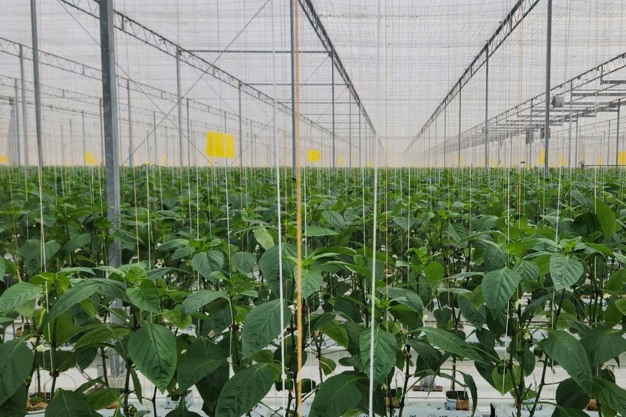Powdery mildew is a widespread and destructive plant disease. Left untreated, it can spread rapidly and significantly impact crop aesthetics and yield. When powdery mildew colonizes, its growth reduces a plant's photosynthetic potential, leading to stunting and loss of leaves, and reducing crop quality.
A deeper understanding of the powdery mildew lifecycle, favorable conditions for growth, symptoms, and disease control strategies can help growers prepare their crops for success.
'Powdery mildew' is a collection of fungal genera that infect over 10,000 plant species; the term is used to describe the symptoms of these fungi, which are similar across host plants. It is an obligate parasite, meaning it requires a living host to complete its lifecycle. Further, powdery mildew species are relatively host-specific, and will not spread from one host plant species to another.

Once spores germinate on healthy plant tissues, fungal strands of hyphae are sent across the leaf surface. Though most of the fungus is outside of the plant, nutrient-absorbing haustorium penetrates the top layer of plant cells, anchoring the fungus within the plant. As the mycelia grow over the leaf surface, they develop spore-producing conidiophores to perpetuate the life cycle. Powdery mildew can also produce structures known as cleistothecia, which result in spores that will infect new plant tissue in higher temperatures.
Dr. Michael Brownbridge, Senior Biological Program Manager at BioWorks, states that if powdery mildew is viewed through the lens of the disease triangle, all its elements- susceptible host, virulent pathogen, and environmental conditions conducive to infection – are often satisfied in many greenhouse crops.
Crowded plantings in damp indoor growing environments with poor air circulation are much more likely to increase disease incidence. In controlled environments, the pathogen favors temperatures from 68-86° F and relative humidity between 60-90%.
Early symptoms of powdery mildew include blotches, patches, lesions, or spots on the upper side of leaf surfaces. The telltale white, fluffy, or powdery appearance indicates diseased tissue, with young plant tissues typically affected more severely when compared to older plant growth.
Controlling the spread of infection from an environmental perspective can be challenging, but not impossible. "Crop management activities greatly affect the environment around the plant," Brownbridge says. Ample spacing between plants and avoiding overwatering helps reduce disease pressure. It is also important to ensure adequate airflow, keeping relative humidity in check, and removing any dead or infected leaves. The use of fans in greenhouse areas are important to reduce relative humidity around plants, making conditions less favorable for infection to occur. "It is important too, to get your nutritional program right for the plant" Brownbridge notes "We know that excessive use of Nitrogen can render plants more susceptible to infection."
In the event of an active powdery mildew infection, growers need to use good cultural practices and deploy preventative or curative treatment strategies. "Successful disease management also means taking direct actions to reduce pathogen levels – through proactive use of biopesticides and reducing plant susceptibility and stress," Brownbridge says.
For curative and preventative treatment against powdery mildew, Dr. Brownbridge recommends MilStop SP, an OMRI-listed biofungicide. When applied to diseased leaves, MilStop SP controls and suppresses powdery mildew before it spreads. It quickly destroys spores by destabilizing and destroying cell membranes, Brownbridge adds. MilStop SP can be used in greenhouse and indoor applications, making it a versatile standalone or rotational tool.
For more information:
BioWorks
bioworksinc.com
